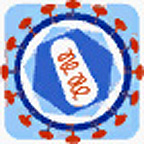
| T H E N I H C A T A L Y S T | J A N U A R Y – F E B R U A R Y 2006 |
|
|
|
|
C O M M E N T A R Y
OPEN
ACCESS AND PUBLIC ARCHIVING:
|
by Kuan-Teh Jeang, NIAID
 |
The other day while driving, I heard an intriguing statistic on National Public Radio. The Baltimore Sun, a major newspaper, had announced that print circulation was 8 percent lower in 2005 than 2004. In newspaper circles, 8 percent is a big drop. Was this mismanagement by the Sun? The answer appears to be "no." Rather, the Sun appears to be reflecting a trend. Most major newspapers reported comparable drops in print-subscription–based distribution. By contrast, free Internet news sites, like those at CNN, the New York Times, and even the Sun, are experiencing explosive growth in daily traffic.
How
are the ups and downs of newspapers relevant to scientific publishing? Fundamentally, scientific and news publishing
are similar. Both strive to share information widely and in a timely and efficient
way. Both want their contents preserved accurately for posterity. Hence, the
closely monitored trend in mass journalism presages a corresponding looming
contest in scientific publishing.
Choices
At issue now is the choice between two different ways of publishing research: the traditional journal (for which subscribers and sometimes authors pay) and the nascent "open-access" (authors pay) counterpart. Inherent in the open-access model is the idea that authors (or the funders of their research) pay for the submission and publication of papers; once published, the paper is free in full text to all interested readers.
Traditional journals, like print journalism, remain the dominant force at the moment. However, slowly but surely, the open-access web and electronically based upstarts are gaining traction. Indeed, a senior science writer at the New York Times recently told me—when asked how the Times sees its free web-based competitors —"We're running scared!"
As
we move into the 21st century, the physical landscape of scientific publishing
is being reshaped by the rise of web and digital technology. In the not-too-distant
past, subscription-based scholarly communication was the primary way to disseminate
information within academia in developed economies. Now, the pervasiveness of
the Internet offers the potential for numerous additional communities—within
or outside academia, in rich and in poor nations—to access previously guarded
knowledge. Such access is in keeping not only with the concept that publicly
funded science should be shared without charge, but also with the tradition
long embraced by scientists that access to large databases such as the genomes
of animals and plants and archives like PubMed
should be free and public.
Open-Access Positives
Nonetheless, broad acceptance of open-access publishing is at a tipping point. Several factors may yet influence its success or failure. The first is the economics of publishing for a wide audience. The web promises to be a low-cost venue that can reach, with unparalleled rapidity, large numbers of geographically dispersed and economically disparate parties.
Contrast this availability with the rising cost of the traditional print model, which threatens affordability by even the best-funded libraries in wealthy nations. For example, United Kingdom statistics show that between 1998 and 2003, the average subscription price of academic journals rose by 58 percent while retail prices increased by only 11 percent (1) .
A second factor is public demand in developed and developing worlds. The view that at-large access to scientific data is not needed because of lack of public interest is incongruent with empirical experience. Existing numbers indicate that only one-third of the users of PubMed are academicians and researchers, whereas two-thirds are the "public"—clearly not indifferent. As science moves increasingly toward globalization, access models that transcend professional classifications, national boundaries, and accidents of birth are timely and necessary.
 |
|
Logo
representing the open-access online journal Retrovirology, edited
by the author
|
Open-Access Unknowns
What of the long-term viability of the open-access model? Traditional journals have withstood the test of time for 340 years. If this tried-and-trusted approach is to be supplanted, the evidence must firmly support the survivability of the alternative. To date, the author-pays financial model is not fully tested in sustainability. Moreover, because most open-access publications are relatively young and have yet to garner prestige, it remains to be seen whether authors and reviewers will flock to these forums in numbers sufficient to drive and sustain quality exchange of scientific knowledge.
A second challenge is the permanent archiving of published knowledge. Printed journals have been stored and curated for centuries. Would digital media be similarly durable, and at what long-term cost to maintain appropriate repositories? One solution to the permanent archiving of electronic data comes from the NIH Library of Medicine's PubMed Central initiative (2).
Currently, NIH, the Howard Hughes Medical Institute, the United Kingdom's Wellcome Trust, Germany's Max-Planck Society and Deutsche Forschungsgemeinschaft, and France's CNRS and INSERM (3) have all encouraged their funded researchers to deposit peer-reviewed articles into publicly accessible repositories. The two major publishers of open-access journals—Public Library of Science (PLoS) and Biomed Central—have also adopted policies of directly and immediately depositing their published works into PubMed Central.
A final important consideration of open-access publishing is its impact on learned societies. At least one-third of all subscription journals are published by not-for-profit organizations. The income surplus generated from publishing is used by societies to support research grants, meetings and conferences, fellowships for students and postdocs, and other worthwhile activities. Learned societies and their publishing endeavors are integral to the fabric of science, and it is crucial that accommodations be reached for societies' publishing to adapt to or co-exist with open-access alternatives.
Emerging
evidence suggests that a balanced co-existence could happen. Data released by the American Society
for Cell Biology show that when its flagship journal, Molecular
Biology of the Cell,
migrated to complete open access within two months after an issue has been published,
author submissions increased by 14 percent and overall subscriptions increased
by 16 percent. There is no inherent barrier to the profitability of an author-pays
open-access model. Learned societies with their vast experience in publishing
and their loyal membership may yet prosper with open-access publishing, as they
have with traditional journals.
Personal Take
I have an interest in the evolution of scientific publishing. Twelve years ago I helped start a traditional journal, the Journal of Biomedical Science, which I edited for more than 10 years.
Two years ago, I left that project to found Retrovirology, an exclusively web-based open-access journal.
Although I have an abiding loyalty to my scientific societies and feel that they deserve continuing revenue streams, my personal read of the winds of change is that open-access publishing and publicly accessible digital repositories like PubMed Central may well be the dominant future players. For the near term the print format of scientific communication is likely to continue. However, just as music, television, and movies are moving to full digitalization, it is inescapable that scientific publishing and archiving must do the same.
Based on the acceptance that Retrovirology has gained within my scientific community, it seems to me that scientists do look beyond the cover of a journal to recognize the value of open accessibility to their work. Our journal caters to a relatively small cohort of retrovirologists, but it is accessed steadily 1,000 times each day, 30,000 times each month. These numbers are disproportionate to our known academic audience and suggest that a significant percentage of our readers are members of the public who value and trust our content.
Public
access, public trust, and public archives—are these not the wave of the
future of scientific publishing?
References
1. "Economic Analysis of Scientific Publishing: A Report Commissioned by the Wellcome Trust," The Wellcome Trust, October 2003.
2. NIH policy statement.
3. The Berlin Declaration: